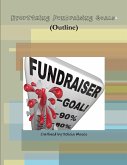Your description of *The Entrepreneurial Outline* captures the essence of an invaluable guide for aspiring entrepreneurs. It is well-structured and concise, emphasizing the critical components of building and scaling a successful business-from the initial concept to operational excellence and powerful branding. The key to its appeal lies in its promise of actionable insights, making it a practical resource for those eager to turn their entrepreneurial dreams into reality. For a book like this to truly resonate with readers, it's important to ensure that it goes beyond just offering advice. Including case studies, real-world examples, or success stories tied to each of the key sections would make the content not only relatable but also applicable in a real-world context. Readers often find it easier to implement strategies when they see how others have navigated similar challenges. Stories of entrepreneurs who have successfully scaled their businesses or navigated complex market conditions can serve as an inspiring blueprint for readers. To create a deeper connection with your audience, consider starting each chapter with a brief anecdote or scenario that exemplifies the concept you'll be discussing. For example, you could open the "Market Mastery" chapter with a story of how a particular startup identified a gap in the market and capitalized on it, ultimately outperforming competitors. This approach would make the theoretical aspects of entrepreneurship feel more tangible and easier to digest. In addition to practical examples, you might also include reflection points or exercises at the end of each chapter. This encourages readers to apply what they've learned to their own business ideas in real-time. By actively engaging with the material, they'll start to shape their own entrepreneurial journey, rather than just passively absorbing information. Given the breadth of topics covered-from financial savvy to personal growth and branding-it's essential to keep the language approachable. Aspiring entrepreneurs are often overwhelmed by the sheer volume of information available, so breaking down complex concepts into digestible, step-by-step guides will enhance the book's usability. Pairing these guides with visual elements, such as flowcharts or diagrams, can also help readers grasp key ideas more quickly. Finally, ending the book with a comprehensive action plan or checklist for launching and scaling a business could serve as a valuable takeaway. This way, readers leave with not only a deeper understanding of entrepreneurship but also a tangible plan they can follow as they embark on their own business ventures. Incorporating these elements into *The Entrepreneurial Outline* can transform it from a powerful guide into an indispensable resource for aspiring entrepreneurs. It would combine actionable insights, practical applications, and inspirational stories to create a holistic tool that empowers readers to navigate the complexities of entrepreneurship with confidence and clarity. Would you like to explore these ideas further or focus on expanding a particular section?¿
Hinweis: Dieser Artikel kann nur an eine deutsche Lieferadresse ausgeliefert werden.
Hinweis: Dieser Artikel kann nur an eine deutsche Lieferadresse ausgeliefert werden.








